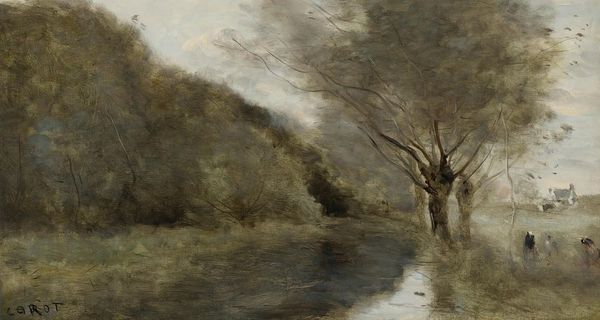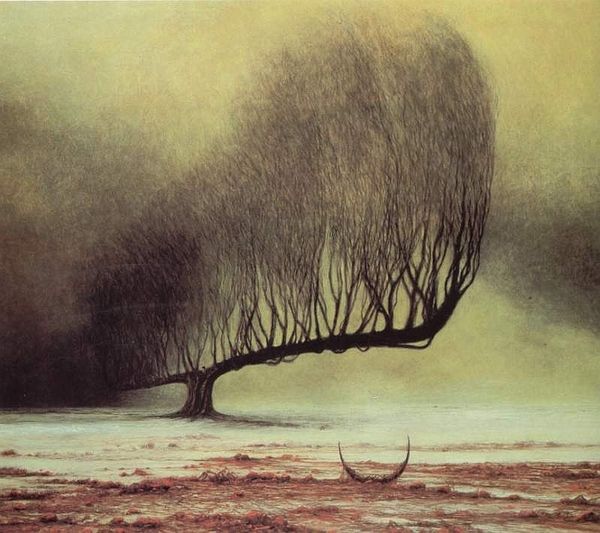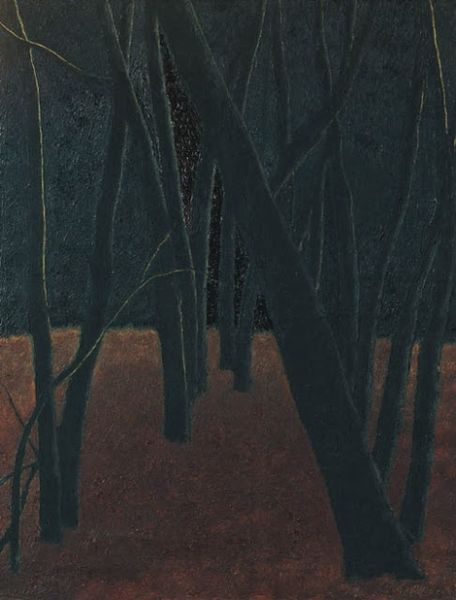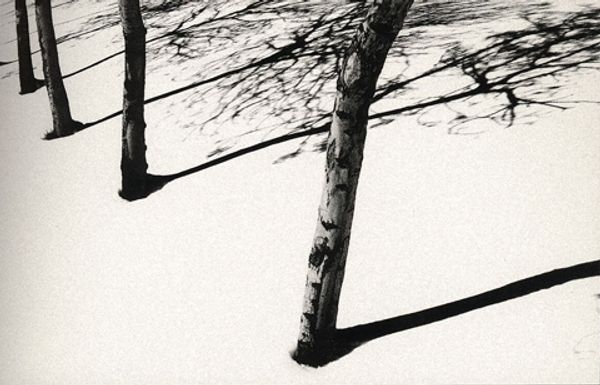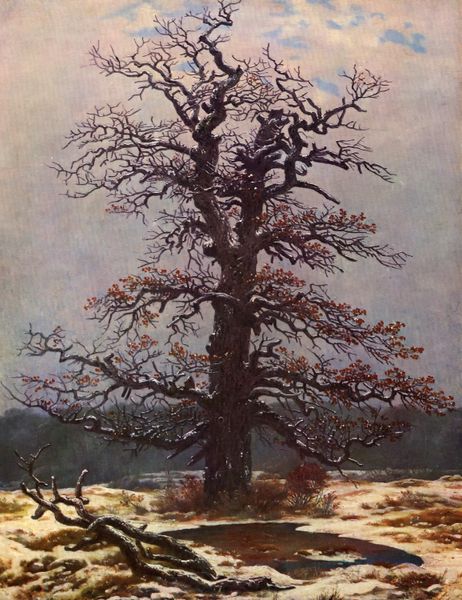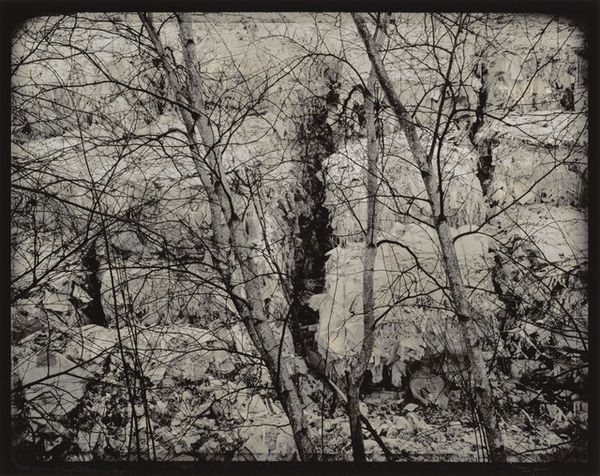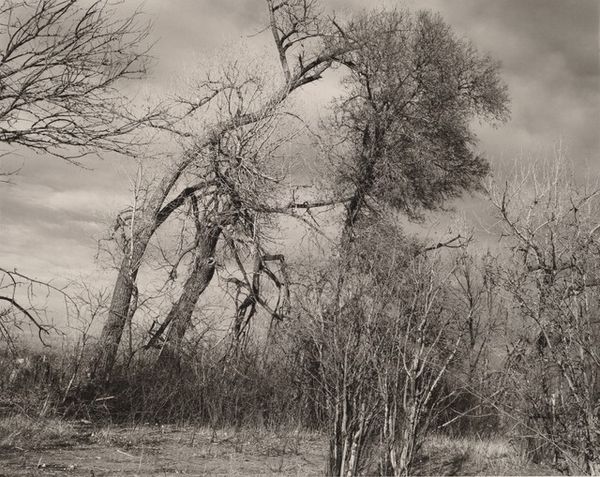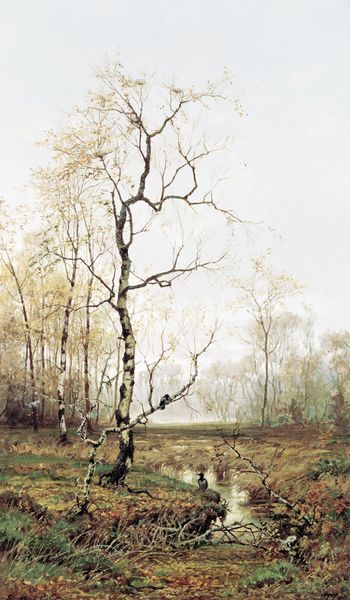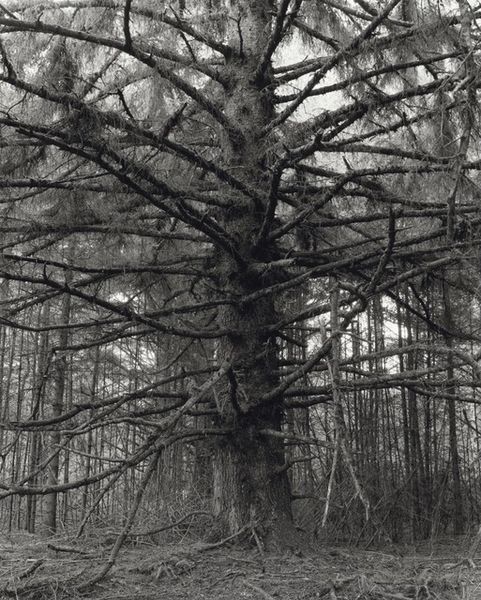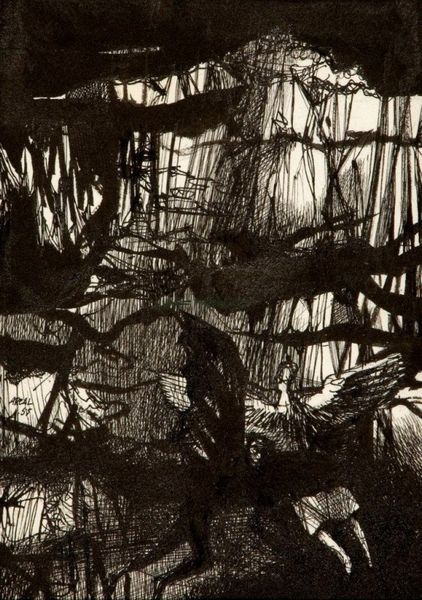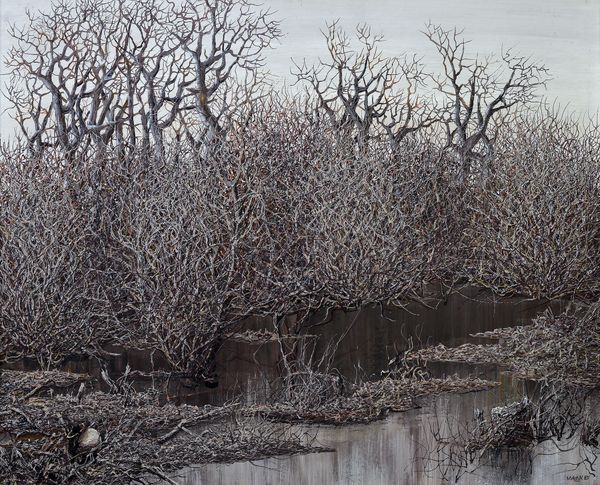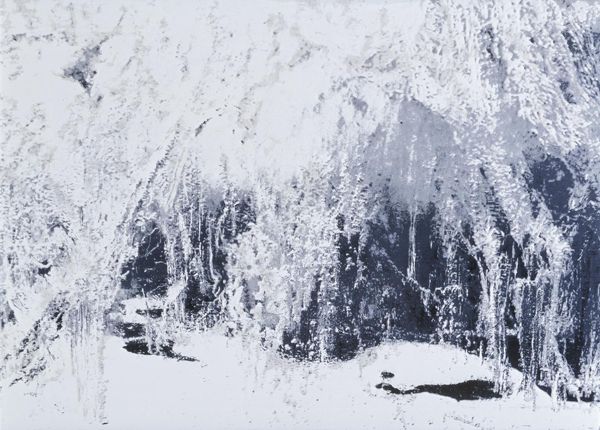
drawing, paper, ink
#
drawing
#
landscape
#
paper
#
ink
#
watercolor
#
realism
Copyright: Jamie Wyeth,Fair Use
Curator: Jamie Wyeth created this landscape titled "Brandywine Spider" in 1973, using ink and watercolor on paper. Editor: Oh, wow. It's eerie and beautiful. It makes me think of chilly autumn mornings, when everything is damp and a bit mysterious, kind of haunting with these stark reflections in the water. Curator: That emotional response resonates with Wyeth’s connection to place. Consider the landscape genre in relationship to nineteenth-century ideas of Manifest Destiny and environmental exploitation. How might we interpret Wyeth’s Brandywine River School paintings in light of climate change and indigenous land rights? Editor: Okay, okay, deep thoughts. It reminds me, too, of how water mirrors can completely transform the world. Suddenly, you have a doubling effect—like the hidden subconscious mirroring the visible landscape above. It feels like the gateway between worlds, almost like a portal. Curator: Definitely, the reflections play a significant role. We might also note the interesting choices he makes concerning line and texture. The artist renders the tangle of roots with an almost obsessive realism, but the scene’s broader sociopolitical context shouldn’t be ignored, particularly as we interrogate realism as a genre. Editor: And those exposed roots—I'm a sucker for some visible roots. They evoke a raw, vulnerable feeling, like the trees are clinging to the earth with everything they've got, bearing all. Does the artist imply some kind of environmental message here? Curator: The exposed roots could symbolize both fragility and resilience. How can we connect these symbolic and stylistic elements to broader themes such as human impact, ecological degradation, and environmentalism? And consider that it's 1973; discussions around ecology are at a tipping point. Editor: Okay, that really puts it in context for me! It's beautiful, yeah, but it's also maybe a bit of a wake-up call. Nature is amazing, but we can really mess it up. What do you think the Brandywine River meant to the artist, in relation to this drawing? Curator: The river becomes an anchor—geographically, personally, culturally. Thinking critically about landscape means deconstructing received notions of idyllic spaces. What is gained when we pair this scene of the Brandywine with issues surrounding power, privilege, and environmental justice? Editor: Whoa, thanks for totally deepening my initial gut reaction. I guess what seems like a straightforward nature scene actually holds layers upon layers of meaning if you're willing to really dive in. Curator: Exactly. Wyeth gives us beauty, yes, but also encourages critical engagement with how we shape, and are shaped by, our environments.
Comments
No comments
Be the first to comment and join the conversation on the ultimate creative platform.
